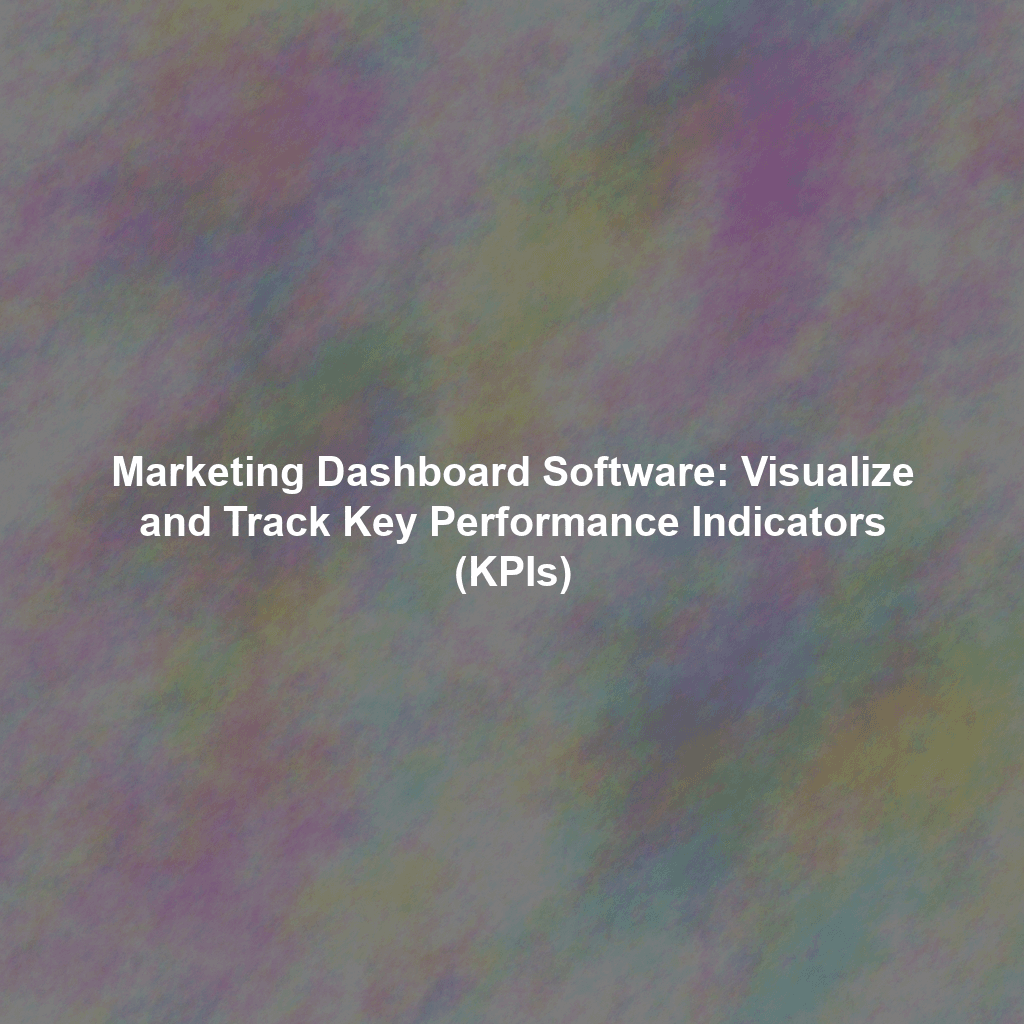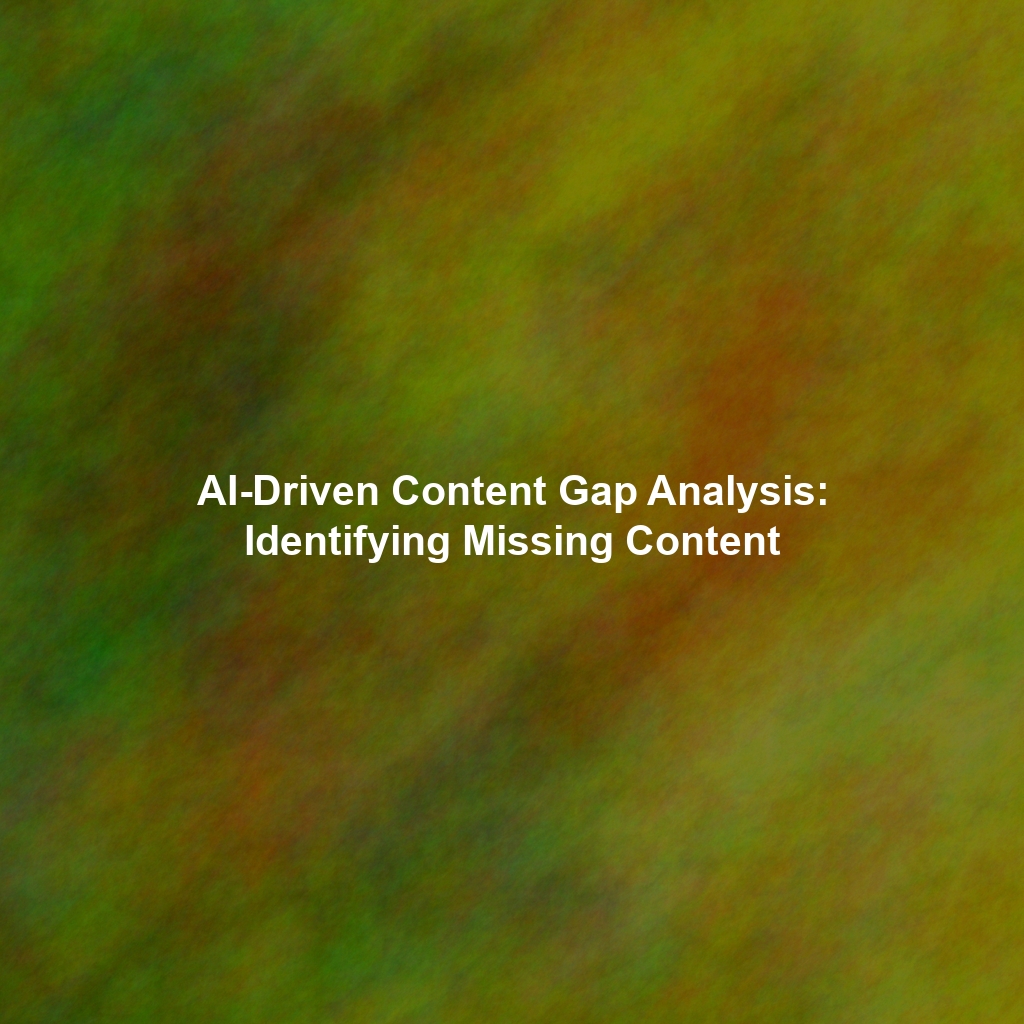The Power of Visual Insights: Mastering Marketing with Dashboards
Think of marketing dashboards as your mission control for campaigns. They provide a centralized, visually engaging overview of your marketing performance, allowing you to quickly identify successes, pinpoint areas for improvement, and make informed decisions that maximize your return on investment (ROI). This article explores the world of marketing dashboard software, uncovering its benefits, key features, and how to choose the right solution for your specific needs.
What Exactly is Marketing Dashboard Software?
Marketing dashboard software is a specialized application designed to collect, organize, visualize, and analyze marketing data from various sources. It presents this data in an easily digestible format, typically through charts, graphs, tables, and other visual representations. This enables marketers to monitor key performance indicators (KPIs), track campaign progress, identify trends, and ultimately, make better decisions based on real-time insights.
Unlike static reports, marketing dashboards are dynamic and interactive. Users can often drill down into specific data points, filter information, and customize the dashboard to display the metrics that are most relevant to their role and objectives. This flexibility is crucial for adapting to changing market conditions and evolving marketing strategies.
The software typically integrates with a wide range of marketing platforms and data sources, including:
- Website Analytics Platforms: Google Analytics, Adobe Analytics
- Social Media Platforms: Facebook, Twitter, LinkedIn, Instagram
- Email Marketing Platforms: Mailchimp, HubSpot, Marketo
- CRM Systems: Salesforce, HubSpot CRM, Zoho CRM
- Advertising Platforms: Google Ads, Facebook Ads, LinkedIn Ads
- SEO Tools: SEMrush, Ahrefs, Moz
By consolidating data from these diverse sources, marketing dashboard software provides a holistic view of marketing performance, eliminating the need for manual data collection and analysis.
Why Invest in Marketing Dashboard Software? The Benefits are Clear
Implementing marketing dashboard software offers a multitude of advantages, empowering marketers to optimize their campaigns and achieve their goals more effectively. Here are some key benefits:
Improved Decision-Making
With real-time access to critical KPIs, marketers can make informed decisions based on concrete data rather than gut feelings. This leads to more effective strategies and better resource allocation.
Enhanced Campaign Performance
By tracking campaign performance in real-time, marketers can identify what’s working and what’s not, allowing them to make adjustments on the fly and optimize their campaigns for maximum impact. They can see, for example, which ad copy resonates best with a specific audience or which landing page has the highest conversion rate.
Increased Efficiency and Productivity
Automating data collection and reporting saves marketers valuable time and resources, allowing them to focus on more strategic tasks. No more spending hours manually compiling spreadsheets! Instead, they can dedicate their efforts to crafting compelling content, engaging with customers, and developing innovative marketing strategies.
Better Alignment with Business Goals
By aligning marketing KPIs with overall business objectives, marketing dashboard software helps ensure that marketing efforts are contributing to the company’s bottom line. This fosters better communication and collaboration between marketing and other departments.
Improved Accountability
With clear metrics and transparent reporting, marketing dashboard software promotes accountability and helps marketers demonstrate the value of their work to stakeholders. It’s easier to show the ROI of marketing investments when you have readily available data to back it up.
Early Identification of Problems
Marketing dashboards can highlight emerging issues or potential problems before they escalate, allowing marketers to take proactive steps to address them. For example, a sudden drop in website traffic or a decline in social media engagement can be quickly identified and investigated.
Competitive Advantage
By leveraging data-driven insights, marketers can gain a competitive edge by identifying new opportunities, optimizing their targeting, and personalizing their messaging.
Essential Features of Effective Marketing Dashboard Software
Not all marketing dashboard software is created equal. To ensure you choose a solution that meets your needs, consider the following key features:
Data Integration Capabilities
The software should seamlessly integrate with the marketing platforms and data sources you use most frequently. This ensures that you have a comprehensive view of your marketing performance.
Customizable Dashboards
The ability to customize dashboards is crucial for displaying the metrics that are most relevant to your role and objectives. Look for software that allows you to easily add, remove, and rearrange widgets.
Real-Time Data Updates
Real-time data updates are essential for tracking campaign performance and making timely adjustments. The software should provide up-to-the-minute insights into your KPIs.
Data Visualization Options
The software should offer a variety of data visualization options, such as charts, graphs, and tables, to help you present your data in a clear and engaging manner. Different data types require different visualization methods, so flexibility is key.
Reporting and Analytics
The software should provide robust reporting and analytics capabilities, allowing you to delve deeper into your data and identify trends. Look for features like trend analysis, segmentation, and cohort analysis.
Alerts and Notifications
The ability to set up alerts and notifications for critical KPIs can help you stay on top of your marketing performance and proactively address any issues. For example, you might set up an alert if your website traffic drops below a certain threshold.
User-Friendly Interface
The software should be intuitive and easy to use, even for non-technical users. A user-friendly interface encourages adoption and ensures that everyone on your team can benefit from the insights provided.
Mobile Accessibility
In today’s mobile-first world, it’s important to have access to your marketing dashboards on the go. Look for software that offers a mobile app or a responsive web interface.
Collaboration Features
Collaboration features, such as the ability to share dashboards and reports with colleagues, can facilitate better communication and teamwork.
Security and Compliance
Ensure that the software complies with relevant security and privacy regulations, such as GDPR and CCPA. Data security is paramount.
Selecting the Perfect Marketing Dashboard Software: A Step-by-Step Guide
Choosing the right marketing dashboard software can be a daunting task, given the plethora of options available. Here’s a step-by-step guide to help you navigate the selection process:
1. Define Your Needs and Objectives
Start by clearly defining your marketing goals and identifying the KPIs that are most important to track. What questions do you want to answer with your data? What metrics will help you measure your progress towards your goals?
2. Identify Your Data Sources
Make a list of all the marketing platforms and data sources you use. Ensure that the software you choose integrates with these sources.
3. Consider Your Budget
Marketing dashboard software varies in price, depending on the features and functionality offered. Determine your budget and look for solutions that fit within your price range. Consider both upfront costs and ongoing subscription fees.
4. Evaluate Different Options
Research and compare different marketing dashboard software solutions. Read reviews, compare features, and request demos to get a feel for each option.
5. Request a Demo or Free Trial
Most marketing dashboard software providers offer a demo or free trial period. Take advantage of these opportunities to test out the software and see if it meets your needs.
6. Involve Your Team
Get input from your marketing team to ensure that the software is user-friendly and meets their needs. The more buy-in you have, the more successful your implementation will be.
7. Consider Scalability
Choose a solution that can scale with your business as your marketing needs evolve. You don’t want to outgrow your software too quickly.
8. Review Customer Support
Check the vendor’s customer support options. Ensure that they offer responsive and helpful support in case you encounter any issues.
Popular Marketing Dashboard Software Options
While a comprehensive list is beyond the scope of this article, here are a few well-regarded marketing dashboard software options to consider. Remember to thoroughly research each option to determine which best fits your unique requirements:
- Tableau: A powerful data visualization and analytics platform with advanced dashboarding capabilities.
- Google Data Studio: A free and versatile dashboarding tool that integrates seamlessly with other Google products.
- Klipfolio: A flexible dashboarding solution that allows you to connect to a wide range of data sources.
- Databox: A marketing dashboard platform designed specifically for agencies and marketing teams.
- Grow.com: A business intelligence platform that offers robust dashboarding and reporting features.
- HubSpot Marketing Hub: Offers built-in dashboarding functionality, especially effective for those heavily invested in the HubSpot ecosystem.
Unlock Your Marketing Potential with Data-Driven Insights
Marketing dashboard software is an indispensable tool for modern marketers. By providing a centralized, visually engaging overview of marketing performance, it empowers you to make informed decisions, optimize your campaigns, and achieve your goals more effectively. Investing in the right marketing dashboard software can transform your marketing efforts from guesswork to a data-driven science, ultimately leading to increased ROI and a stronger competitive advantage. So, take the plunge, explore the options, and unlock the power of visual insights to propel your marketing to new heights.
 Skip to content
Skip to content

